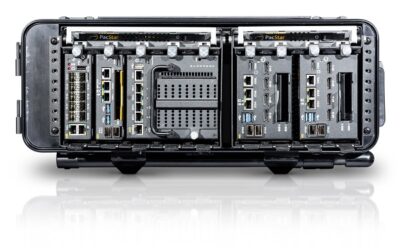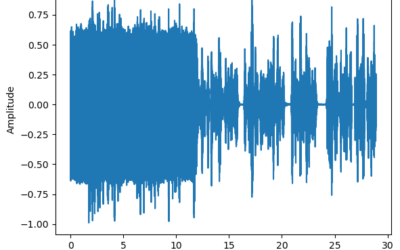From LVC Through VCL to LAV … or AVL?
We talk frequently – and at great length – about the influence of and the opportunities provided by the gaming industry in the defence and security modelling and simulation community. There is, perhaps, no better-known example of the way in which the philosophy of the entertainment side of the capability spectrum has morphed into a serious contender for the plaudits justifiably sent in its direction than Bohemia Interactive Simulations (BIS), developers of the near-ubiquitous VBS 3 comprehensive training software suite. The company was selected by the US Army last year to demonstrate technologies for a cloud-enabled, virtual world training capability to meet the requirements of the Army’s revolutionary Synthetic Training Environment (STE) initiative. MTSC managed to catch up briefly with BIS CEO Arthur Alexion (AA) and seek a little more detail on the company’s positioning, success and outlook.
MTSC: Reuse of assets – hardware and software – is characterising quite a lot of current activity around our domain: true or false?
AA: Reuse is certainly a key driver at the moment – and is becoming a trend, without a doubt. But it doesn’t just stem from financial imperatives or a desire to extract maximum utility from investment in assets – it’s much more to do with the desire for modular software -something we are being asked for all the time now. That’s what is driving the reuse issue – just look at the US Navy’s current reuse of cockpit software, for example. They are now starting to reuse an existing simulation setup with an augmented reality (AR) headset, so that the trainee gets to see his own hands in the real world, operating control hardware, while his eyes see the scene created for him by an image generator. It is definitely a trend and one that isn’t just being applied to military simulation but across the entire domain – it’s a software principle now, firmly embedded in the mindset from university onwards.
It applies to us in a subtly different way from others in the field due largely to what makes us different. For a long time, people have been asking why BISim is so successful and I firmly believe it’s because our business model is different. Fundamentally, we are a product-based business, whereas others in this space are essentially software businesses. We provide our customers with a product that is as open and as future-proofed as we can make it, not one that requires tech refreshes or wholesale replacement in x number of years. Do we update and enhance the product over time? Sure – we would be mad not to. But we treat the solution we provide as a product, with all the support and continued development that implies. It’s not simply a ‘point-in-time’ solution that then has to stand alone purely on its own merits until outdated.
MTSC: A lot of the argument surrounding greater use of simulation centres on cost, but nobody really talks openly about the scale of those costs. Can you comment at all?
AA: Leaving aside the obvious qualifier that it depends exactly how long the piece of string is, at the tope end of the simulator field – a six-degrees-of-freedom Level D certified full flight simulator (FFS) is going to cost between $10-30 million, depending on the number of bells and whistles required. A lot of that cost comes from building a flight model as near perfect as possible – an expensive proposition. But there are stacks of applications in which the user doesn’t need such a complex, precise model: learning to fly the aircraft, in this case, may require the FFS solution. Aspects of learning to fly the mission, however, can be achieved with flight training devices and part task trainers that can cost a couple of million down to several hundred thousand, depending on the exact nature of the requirement.
Then with virtual reality (VR) and AR you can achieve even cheaper solutions for less demanding but still critical applications. Spend $10,000 on a VR headset, add a reasonably good computer for $5,000, some control hardware and software and you can get a basic simulator working quickly for surprisingly little outlay. Then it depends on things like the number of projectors – high end units come at anywhere from $50-100,000 a time – and if you then need a motion platform ($2-3 million) or a well-tuned flight model ($2 million or so), you’re getting back into the territory of an FFS sized solution. But users really need to recognise that simulation solutions can be fine tuned to specific requirements: one size most assuredly does not fit all.
MTSC: That’s a good segué into the issue of whether there is an ‘ideal’ LVC (live-virtual-constructive) balance or not. In fact – how would you react to the suggestion that LVC should be renamed VCL to reflect the most frequent sequence of training regimes in the average training pipeline?
AA: An interesting question – how about turning it further on its head and suggesting that it may well become LAV, with the A standing for augmented and taking a pole position? The natural inclination – prompted by human nature, institutional comfort levels, readiness demands and a host of other factors – is to focus on live training when possible. The problem is, that “when possible” is becoming a more questionable issue now. But AR has the potential to be a truly disruptive game changer, in a positive fashion: admittedly, to fully exploit the capabilities AR-based training solutions will bring to the community, cloud processing will be required, because local computers simply won’t have the power. But the US Army’s Synthetic Training Environment project is already proving that robust, sustainable and powerful solutions can be applied to a host of disparate scenarios easily, efficiently and effectively. Moore’s Law doesn’t apply any more – we can look at improvements in terms of orders of magnitude rather than percentages. And that must surely be healthy for the industry and for the end results that our uniformed colleagues seek.
Alexion had considerably more to say than can easily be accommodated here and some of it needs to be refined in additional discussion, which MTSC looks forward to during ITEC in Stockholm next month. Watch this space for more from Bohemia, delivering thought-provoking material, as ever.
























